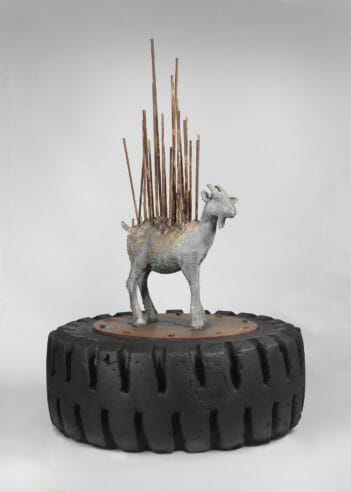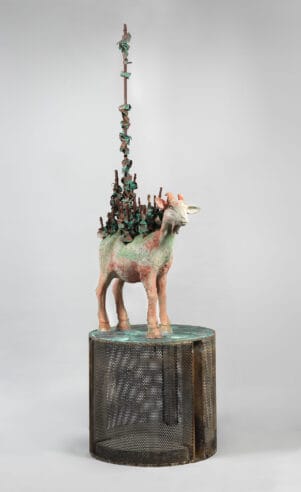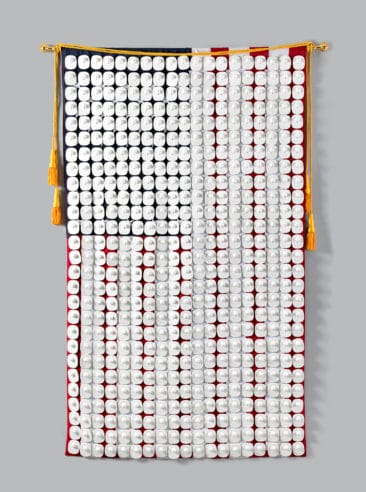Like many immigrants, Nari Ward has a particular fascination with place. The 2017 Vilcek Prizewinner in Fine Arts emigrated from Kingston, Jamaica, at the age of 12, and arrived at New York City’s John F. Kennedy International Airport. To this day, he says, the words “‘John F. Kennedy’ resonate more for that moment in my memory than for its namesake.”
This consideration of place carries over into Nari’s artwork. Known for found-object art assemblages, Nari’s installations often feature objects collected from the neighborhoods surrounding his studio in Harlem: abandoned baby strollers, discarded oven pans, plexiglass barriers salvaged from bodegas. The objects both summon up the history of a place while providing the opportunity to layer an element of transformation or redemption.
One of his earliest installations, “Amazing Grace,” featured 365 baby strollers that Nari found during a residency at the Studio Museum in Harlem in the 1990s. “I would literally go in and punch a clock,” Nari remembers, “and then I would just go back out and collect things.” Back then, baby strollers were easy to find: In the ’90s, Harlem was punctuated with empty lots, and indigent people often used strollers to collect bottles and cans.
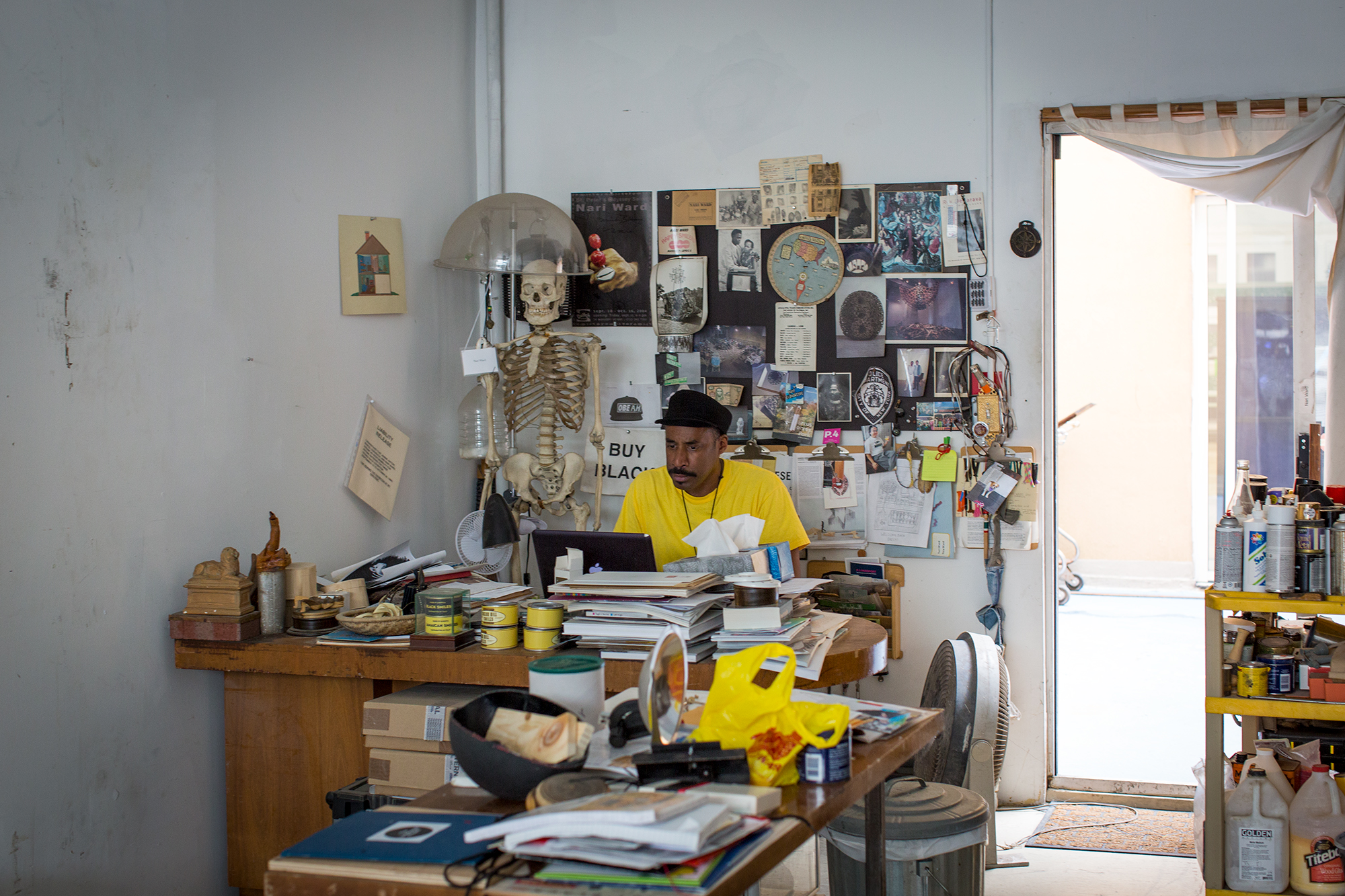
To Nari, the strollers said a lot: They were, simultaneously, the discards of a capitalistic culture that urged disposal over reuse, a symbol of the newborn entering into the world, and the tools of marginalized people struggling to make a meager living. They were tied together with fire hose into a shape reminiscent of a womb, to be displayed in a former firehouse in Harlem.
When it was placed together, however, Nari was struck by how sad the piece was. “There wasn’t the element of transformation that I needed, and the hope that I wanted for these objects,” he said. Having been raised in a Baptist family, he decided to include a recording of Mahalia Jackson’s rendition of “Amazing Grace.” As a hymn about a slave trader begging for forgiveness and promising to change while caught in a storm at sea, the recording resonated with Nari, and allowed for a more hopeful interpretation of the installation.
Sonic elements are important to Nari; for him, they are another tool for heightening the sense of physicality and place in his installations, for grounding viewers in the act of observing the moment. “For me, it’s always about how you negotiate the viewer’s body, the experience of being in front of that thing,” he says. “It’s a window into another kind of emotional space.”
He uses that physicality to great effect in another installation, “Naturalization Drawing Table.” The central focus of the piece is a large desk, made out of plexiglass barriers from bodegas and covered with drawings made over applications from the former Immigration and Naturalization Services. On select days during its exhibition, viewers can fill out an application and line up to exchange it for an envelope of Nari’s drawings; their own applications are then displayed and become part of the exhibition. By positioning and maneuvering viewers in such a way, Nari hopes to illustrate a sense of the quid pro quo aspect of the immigration process, as well as its inherent bureaucracy.
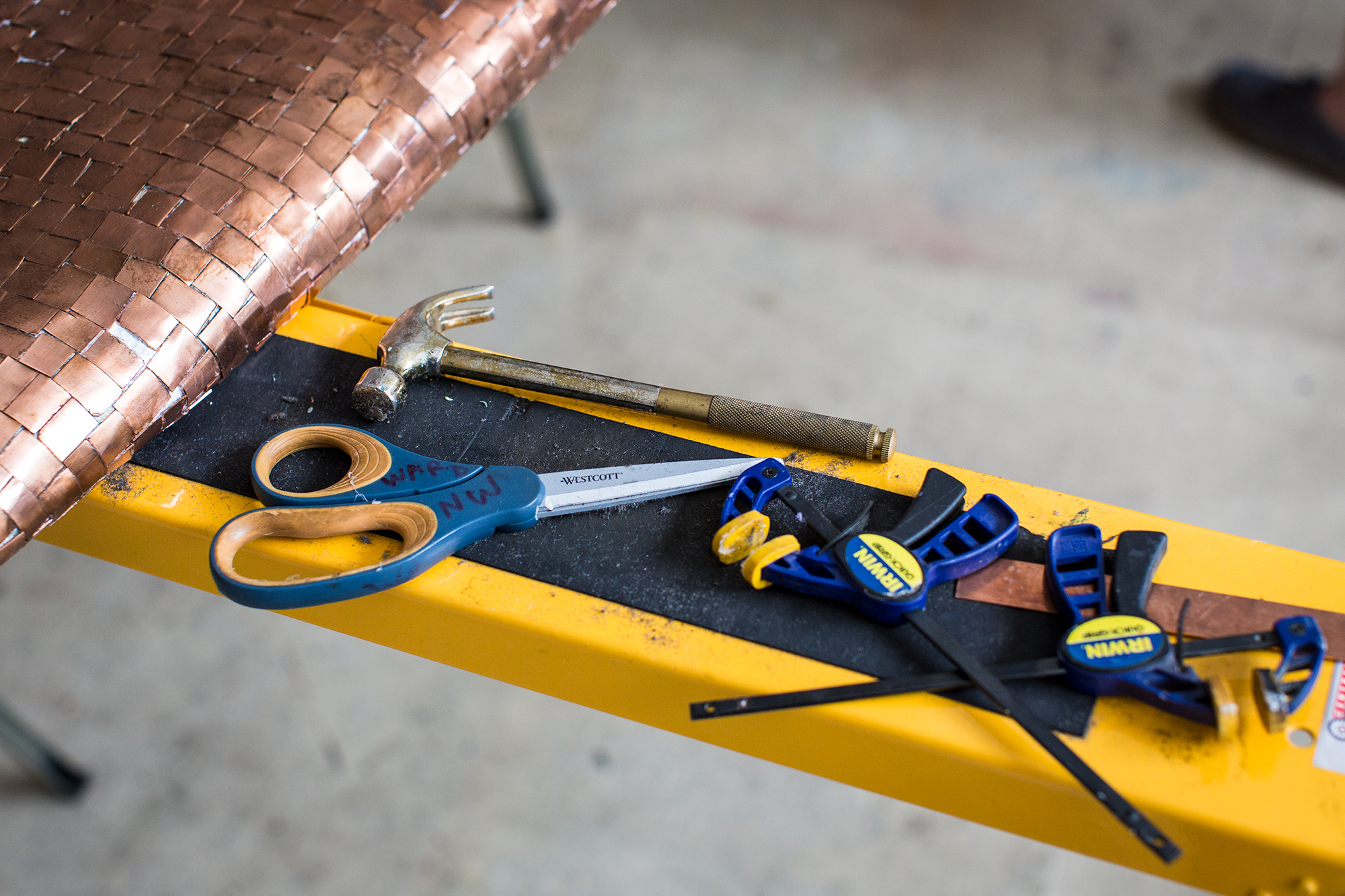
Despite Nari’s careful orchestration of viewers and their experience of his work, he hopes to leave his art open to wide interpretation. His installations start as anxieties and preoccupations—the things that keep him up at night: “Social injustice, violence, power, the numbing oppression of power,” he says. He sees himself as a sculptor of sorts, giving shape to these ideas through objects that he finds; these objects then take him through a process of trying to understand and express the crises and questions he is grappling with.
He is careful, however, to keep the end result from being too literal: “If I can keep those questions open-ended enough and relevant enough, I feel the work will always be necessary and always speak to another time,” he says. “I don’t really want to just speak to one moment or one particular community.”
As an artist and an immigrant, Nari is aware that context and interpretations change from place to place, and from community to community. “When I am traveling, I become a Jamaican artist, which is really strange,” he says. “When I am here, everybody is just an artist.”
He finds that malleability interesting, and ultimately, empowering, for it allows for a fluidity of interpretation and understanding. “For me, part of that element of empowerment is what the work needs to be about: How can the viewer define who they are, not by what’s being pushed onto them, or what the normal expectation is, but by finding a new position for them to take.”
